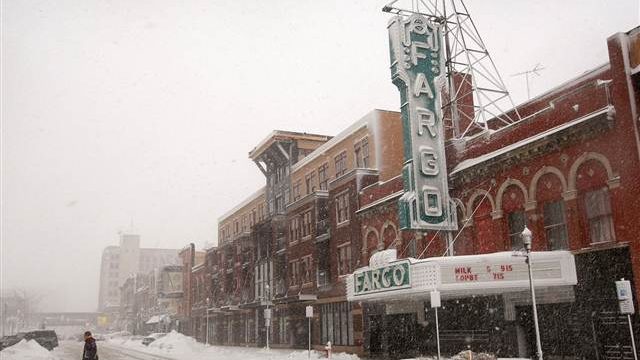Does Fargo Really Have A Drinking Problem?

I don’t think there’s any question that North Dakotans are drinkers. But are North Dakotans problem drinkers? You’d get that feeling from all the headlines about a CDC report which named Fargo the “drunkest city in America.”
A recent Centers for Disease Control and Prevention report revealed that 38 million Americans drink too much, but what cities have the biggest alcohol problems on their hands?
Bustle.com examined the CDC data and identified the 10 “drunkest” U.S. cities based on their binge and heavy drinking rates.Fargo, N.D., took the top spot, with 28% of residents qualifying as heavy drinkers, meaning men there have more than two drinks a day and women have one drink a day.
A public health official blamed Fargo’s drinking “problem” (more on that in a moment) on the easy access to booze. Fargo, after all, has issued 180 liquor licenses. But if America’s stab at alcohol prohibition in the last century taught us anything, it’s that demand really doesn’t have anything to do with supply. Even after the country cut off all legal access to booze, Americans got drunker than ever. Problems related to drinking skyrocketed under prohibiton.
Fargo’s liquor licenses reflect demand, not the other way around.
And does Fargo really have a drinking problem? Writing for Reason, Jacob Sullum finds that the government’s definition of who is and is not a problem drinking are problematic:
According to the CDC, “problem drinkers” consist mainly of “binge drinkers,” which does not mean what you might think: people who spend days in a drunken stupor, devoting themselves to intoxication in a way that seriously disrupts their lives. No, according to the CDC, a man is a binge drinker if at any point in the last month he has consumed five or more drinks “on an occasion”; for a woman, the cutoff is four drinks.
This definition is based on the amounts typically needed to reach a blood alcohol concentration of 0.08 percent, which corresponds to the legal per se standard for driving while intoxicated (DWI). What if you do not plan to drive? It does not matter. The CDC has decreed that no one should ever drink this much, no matter the circumstances.
Note that the CDC’s definition of a binge is determined legally rather than scientifically. When the DWI standard was 0.10 percent, many of today’s binge drinkers would not have qualified as such. If Congress lowers the cutoff to 0.05 percent, will the number of binge drinkers skyrocket overnight?
Even people who never have more than one drink per day can run afoul of the government’s standards for problematic consumption:
The CDC also worries about men who have more than 14 drinks per week and women who have more than seven.
If you are a woman, don’t think you can get a pass by sticking to one drink every day but Saturday, when you have two. That puts you over the government’s limit and makes you part of the problem.
Unless you live in Canada, where 10 drinks a week is deemed OK for women; or the U.K., where women are safe if they do not “regularly” consume more than three “units” (1.5 glasses of wine) a day; or Italy, where they are allotted up to 40 grams of ethanol (nearly three shots of vodka) each day. Evidently the CDC’s rules are not as obviously correct as it pretends.
It’s ironic that something like a glass of wine a day for a woman, which is widely seen as having positive health impacts, can also be deemed problem drinking by the government.
Do the people of Fargo drink more than people in other US cities? They probably do. But the government’s definitions of problem drinking leave much to be desired.




